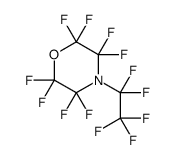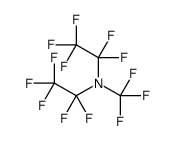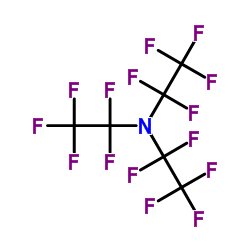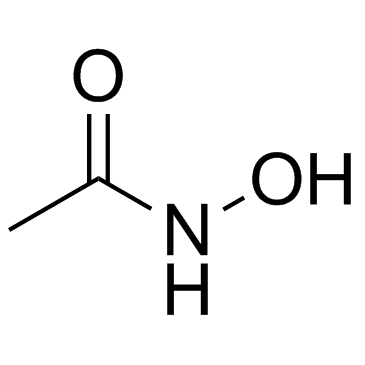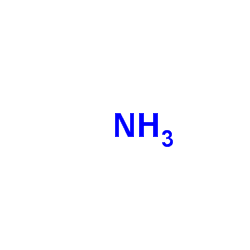100-37-8
| Name | 2-diethylaminoethanol |
|---|---|
| Synonyms |
N,N-Diethylethanolamine
Diethylaminoethanol 2-(Diethylamino)ethanol 2-Diethylaminoethanol EINECS 202-845-2 MFCD00002850 2-Hydroxytriethylamine Ethanol, 2-(diethylamino)- |
| Density | 0.9±0.1 g/cm3 |
|---|---|
| Boiling Point | 164.8±13.0 °C at 760 mmHg |
| Melting Point | -70 °C |
| Molecular Formula | C6H15NO |
| Molecular Weight | 117.189 |
| Flash Point | 48.9±0.0 °C |
| Exact Mass | 117.115364 |
| PSA | 23.47000 |
| LogP | 0.74 |
| Vapour density | 4.04 (vs air) |
| Vapour Pressure | 0.7±0.7 mmHg at 25°C |
| Index of Refraction | 1.443 |
| Stability | Stable. Flammable. Incompatible with strong oxidizing agents, acids. Moisture sensitive. Hygroscopic. |
| Water Solubility | soluble |
| Freezing Point | -70℃ |
Synonym:2-Diethylaminoethanol, Beta-Diethylaminoethano Section 2 - COMPOSITION, INFORMATION ON INGREDIENTS
Risk Phrases: 10 36/37/38 Section 3 - HAZARDS IDENTIFICATION EMERGENCY OVERVIEW
Flammable. Irritating to eyes, respiratory system and skin.Hygroscopic. Potential Health Effects Eye: May cause eye irritation. May cause eye injury. Skin: May cause severe skin irritation. May be harmful if absorbed through the skin. Ingestion: May cause irritation of the digestive tract. May be harmful if swallowed. Inhalation: Vapors may cause dizziness or suffocation. May cause nausea and possible vomiting. Chronic: None Section 4 - FIRST AID MEASURES Eyes: Flush eyes with plenty of water for at least 15 minutes, occasionally lifting the upper and lower eyelids. Get medical aid immediately. Skin: Get medical aid immediately. Flush skin with plenty of soap and water for at least 15 minutes while removing contaminated clothing and shoes. Wash clothing before reuse. Ingestion: If victim is conscious and alert, give 2-4 cupfuls of milk or water. Never give anything by mouth to an unconscious person. Get medical aid immediately. Inhalation: Get medical aid immediately. Remove from exposure to fresh air immediately. If not breathing, give artificial respiration. If breathing is difficult, give oxygen. Notes to Physician: Antidote: None reported. Section 5 - FIRE FIGHTING MEASURES General Information: As in any fire, wear a self-contained breathing apparatus in pressure-demand, MSHA/NIOSH (approved or equivalent), and full protective gear. Vapors may form an explosive mixture with air. Vapors can travel to a source of ignition and flash back. Use water spray to keep fire-exposed containers cool. Containers may explode in the heat of a fire. Flammable liquid and vapor. Vapors may be heavier than air. They can spread along the ground and collect in low or confined areas. Extinguishing Media: For small fires, use dry chemical, carbon dioxide, water spray or alcohol-resistant foam. Do NOT get water inside containers. For large fires, use water spray, fog or alcohol-resistant foam. Cool containers with flooding quantities of water until well after fire is out. Section 6 - ACCIDENTAL RELEASE MEASURES General Information: Use proper personal protective equipment as indicated in Section 8. Spills/Leaks: Absorb spill with inert material (e.g. vermiculite, sand or earth), then place in suitable container. Avoid runoff into storm sewers and ditches which lead to waterways. Use water spray to disperse the gas/vapor. Remove all sources of ignition. Use a spark-proof tool. Provide ventilation. Section 7 - HANDLING and STORAGE Handling: Wash thoroughly after handling. Use only in a well-ventilated area. Avoid contact with eyes, skin, and clothing. Empty containers retain product residue, (liquid and/or vapor), and can be dangerous. Keep container tightly closed. Avoid contact with heat, sparks and flame. Avoid ingestion and inhalation. Do not pressurize, cut, weld, braze, solder, drill, grind, or expose empty containers to heat, sparks or open flames. Storage: Keep away from heat, sparks, and flame. Store in a tightly closed container. Store in a cool, dry, well-ventilated area away from incompatible substances. Flammables-area. Store protected from moisture. Section 8 - EXPOSURE CONTROLS, PERSONAL PROTECTION Engineering Controls: Use adequate ventilation to keep airborne concentrations low. Personal Protective Equipment Eyes: Wear appropriate protective eyeglasses or chemical safety goggles as described by OSHA's eye and face protection regulations in 29 CFR 1910.133 or European Standard EN166. Skin: Wear appropriate protective gloves to prevent skin exposure. Clothing: Wear appropriate protective clothing to prevent skin exposure. Respirators: Follow the OSHA respirator regulations found in 29CFR 1910.134 or European Standard EN 149. Always use a NIOSH or European Standard EN 149 approved respirator when necessary. Section 9 - PHYSICAL AND CHEMICAL PROPERTIES Physical State: Liquid Appearance: clear yellow brown Odor: unpleasant odor pH: Not available. Vapor Pressure: 1.9 mbar @ 20 C Viscosity: 5mPa @ 20C Boiling Point: 161 deg C @ 760.00mm Hg Freezing/Melting Point: -70 deg C Autoignition Temperature: 260 deg C ( 500.00 deg F) Flash Point: 60 deg C ( 140.00 deg F) Explosion Limits, lower: 6.70 vol % Explosion Limits, upper: 11.7 vol % Decomposition Temperature: Solubility in water: soluble Specific Gravity/Density: .8840g/cm3 Molecular Formula: C6H15NO Molecular Weight: 117.19 Section 10 - STABILITY AND REACTIVITY Chemical Stability: Stable under normal temperatures and pressures. Conditions to Avoid: Incompatible materials, ignition sources, excess heat, strong oxidants, exposure to moist air or water. Incompatibilities with Other Materials: Moisture. Hazardous Decomposition Products: Nitrogen oxides, carbon monoxide, irritating and toxic fumes and gases, carbon dioxide, nitrogen. Hazardous Polymerization: Has not been reported. Section 11 - TOXICOLOGICAL INFORMATION RTECS#: CAS# 100-37-8: KK5075000 LD50/LC50: CAS# 100-37-8: Dermal, guinea pig: LD50 = 1 mL/kg; Draize test, rabbit, eye: 5 mg Severe; Inhalation, mouse: LC50 = 5000 mg/m3; Oral, rat: LD50 = 1300 mg/kg; Skin, rabbit: LD50 = 1260 uL/kg. Carcinogenicity: N,N-Diethylethanolamine - Not listed by ACGIH, IARC, NIOSH, NTP, or OSHA. See actual entry in RTECS for complete information. Section 12 - ECOLOGICAL INFORMATION Ecotoxicity: Fish: Fathead Minnow: 1780 mg/L; 96 Hr.; Flow-through Section 13 - DISPOSAL CONSIDERATIONS Dispose of in a manner consistent with federal, state, and local regulations. Section 14 - TRANSPORT INFORMATION IATA Shipping Name: 2-DIETHYLAMINOETHANOL Hazard Class: 8 UN Number: 2686 Packing Group: II IMO Shipping Name: DIETHYLAMINOETHANOL Hazard Class: 3.3 UN Number: 2686 Packing Group: III RID/ADR Shipping Name: DIETHYLAMINOETHANOL Dangerous Goods Code: 3(31C) UN Number: 2686 Section 15 - REGULATORY INFORMATION European/International Regulations European Labeling in Accordance with EC Directives Hazard Symbols: XI Risk Phrases: R 10 Flammable. R 36/37/38 Irritating to eyes, respiratory system and skin. Safety Phrases: S 28A After contact with skin, wash immediately with plenty of water. WGK (Water Danger/Protection) CAS# 100-37-8: 1 United Kingdom Occupational Exposure Limits CAS# 100-37-8: OES-United Kingdom, TWA 10 ppm TWA; 49 mg/m3 TWA Canada CAS# 100-37-8 is listed on Canada's DSL List. CAS# 100-37-8 is listed on Canada's Ingredient Disclosure List. Exposure Limits CAS# 100-37-8: OEL-AUSTRALIA:TWA 10 ppm (50 mg/m3);Skin OEL-AUSTRIA:TWA 10 ppm (50 mg/m3);Skin OEL-BELGIUM:TWA 10 ppm (48 mg/m3);Skin OEL-DENMARK:TWA 10 ppm (50 mg/m3);Skin OEL-FINLAND:STEL 10 ppm (50 mg/m3);Skin OEL-FRANCE:TWA 10 ppm (50 mg/m3);Skin OEL-GERMANY:TWA 10 ppm (50 mg/m3);Skin OEL-THE NETHERLANDS:TWA 10 ppm (50 mg/m3);Skin OEL-THE PHILIPPINES:TWA 10 ppm (50 mg/m3);Skin OEL-RUSSIA:STEL 5 mg/m3;Skin OEL-SWITZERLAND:TWA 10 ppm (50 mg/m3);Skin OEL-UNITED KINGDOM:TWA 10 ppm (50 mg/m3);Skin OEL IN BULGARIA, COLOMBIA, JORDAN, KOREA check ACGIH TLV OEL IN NEW ZEALAND, SINGAPORE, VIETNAM check ACGI TLV US FEDERAL TSCA CAS# 100-37-8 is listed on the TSCA inventory. SECTION 16 - ADDITIONAL INFORMATION N/A |
CHEMICAL IDENTIFICATION
HEALTH HAZARD DATAACUTE TOXICITY DATA
|
| Symbol |



GHS02, GHS05, GHS06 |
|---|---|
| Signal Word | Danger |
| Hazard Statements | H226-H302-H311 + H331-H314 |
| Precautionary Statements | P210-P280-P303 + P361 + P353-P304 + P340 + P310-P305 + P351 + P338-P370 + P378 |
| Personal Protective Equipment | Faceshields;full-face respirator (US);Gloves;Goggles;multi-purpose combination respirator cartridge (US);type ABEK (EN14387) respirator filter |
| Hazard Codes | C:Corrosive |
| Risk Phrases | R10;R20/21/22;R34 |
| Safety Phrases | S25-S26-S36/37/39-S45 |
| RIDADR | UN 2686 8/PG 2 |
| WGK Germany | 1 |
| RTECS | KK5075000 |
| Packaging Group | II |
| Hazard Class | 8 |
| HS Code | 2922192210 |
| Precursor 10 | |
|---|---|
| DownStream 9 | |
| HS Code | 2922192210 |
|---|---|
| Summary | 2922192210 2-(diethylamino)ethanol。supervision conditions:3(export license for dual-use item and technologies)。VAT:17.0%。tax rebate rate:9.0%。MFN tarrif:6.5%。general tariff:30.0% |


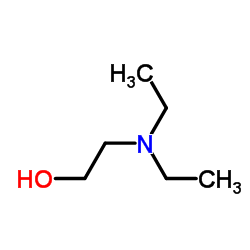

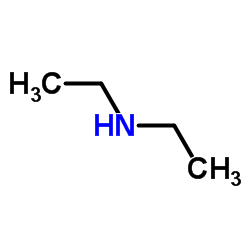

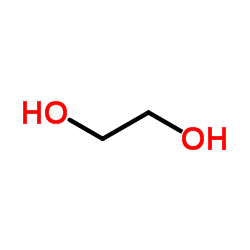
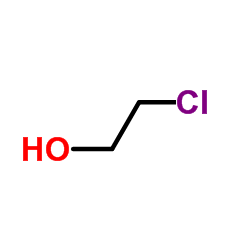

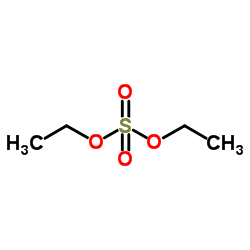
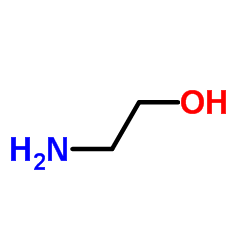



![2-(diethylamino)ethyl N-[2-(2-methoxyethoxy)phenyl]carbamate structure](https://image.chemsrc.com/caspic/376/108978-03-6.png)
